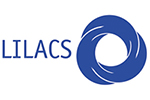ISSN Online: 2177-1235 | ISSN Print: 1983-5175
Showing of 1 until 4 from 4 result(s)
Search for : Fibrous Dysplasia; Craniofacial; Treatment; Surgery; Reconstruction
Gradual Bone Distraction in Craniosynostosis - Preliminary Results in Seven Cases
ABSTRACT
Seven patients with craniosynostosis (mean age 8 years, Apert syndrome, n=4, Cronzon's disease, n=3) underwent lengthening of the skull by gradual bone distraction. Three patients (group A) were treated by coronal craniectomy reaching the orbital fissure and gradual bone distraction. The other four patients (group B) underwent monobloc craniofacial disjunction and gradual bone distraction. The patients' progress was monitored clinically as well as by radiographs and photographs. The results showed that craniofacial disjunction followed by gradual bone distraction produced complete correction of exophthalmus and an improvement in the functional and aesthetic aspects of the middle third of the face without the need of bone grafts.
Keywords: craniofacial bone distraction; skull lengthening; craniosynostosis; Apert; face advance; Crouzon.
RESUMO
Foi realizado alongamento gradual de ossos do crânio em pacientes portadores de craniossinostose (quatro Síndromes de Apert e três Anomalias de Crouzon). Três pacientes (grupo A) foram submetidos a craniectomia coronal atingindo a fissura orbital e alongamento ósseo gradual. Outros quatro pacientes (grupo B) foram submetidos a disjunção craniofacial em monobloco (Ortiz - Monasterio, 1978) e alongamento ósseo gradual. Os pacientes foram avaliados por exames clínicos e documentação radiográfica e fotográfica. Os resultados demonstraram que a disjunção craniofacial seguida de alongamento ósseo gradual produziu correção completa da exoftalmia e melhora significativa nos aspectos estéticos e funcionais do terço médio da face) sem o uso de enxertos ósseos.
Palavras-chave: craniossinostose; alongamento ósseo craniofacial; Apert; Crouzon; disjunção craniofacial
Surgical approach to the treatment of craniofacial fibrous dysplasia - a 14-year experiencedysplasia - 14 years experience
ABSTRACT
INTRODUCTION: Fibrous dysplasia is benign tumor of the craniofacial skeleton that primarily affects young patients. It is characterized by the progressive growth of benign fibrous tumors with resulting functional and aesthetic deformities. This study assesses the clinical and prognostic features in patients with fibrous dysplasia who underwent surgical treatment at our institution. METHODS: Retrospective analysis of 19 patients with craniofacial fibrous dysplasia, treated between January 1997 and December 2011 with bone remodeling and surgical resection. We also review the literature regarding fibrous dysplasia. RESULTS: Patients ranged between 8-65 years old, with a mean age of 21.75 years. Ten patients (52.7%) were women. The polyostotic form was predominant and present in15 cases (78.9%). The sphenoid, ethmoid, and frontal bones were most commonly involved in the polyostotic form and the mandibular and zygomatic bones were most commonly involved in the monostotic form. The main complaint was asymmetry of the face. One patient developed decreased visual acuity. Treatment was based on surgical resection and graft reconstruction in the localized form of the disease, and bone abrasion and remodeling in the polyostotic form. Intracranial access was necessary in only one case (5.2%) where the optic nerve was compressed. Repeat surgical treatment due to recurrent tumor growth was necessary in three patients. The only complication occurred in a patient who developed lagophthalmos and epicanthus postoperatively after undergoing surgery using infraorbital access. No other complications occurred during short- and long-term follow-up. Functional preservation and facial contour recovery outcomes were satisfactory. CONCLUSION: Our experience, along with that of other investigators, demonstrates that surgery is effective in treating selected cases of craniofacial fibrous dysplasia.
Keywords: Fibrous Dysplasia; Craniofacial; Treatment; Surgery; Reconstruction.
RESUMO
INTRODUÇÃO: Dentre os tumores benignos do esqueleto craniofacial, a displasia fibrosa caracteriza-se pelo crescimento progressivo e acometimento de jovens, acarretando deformidade funcional e estética. Esse trabalho analisa aspectos clínicos e prognósticos de pacientes com essa patologia, submetidos a tratamento cirúrgico. MÉTODOS: Análise retrospectiva de 19 pacientes com displasia fibrosa craniofacial, acompanhados de janeiro de 1997 a dezembro de 2011, tratados com remodelamento ósseo e ressecção cirúrgica. Revisão da literatura sobre. RESULTADOS: A distribuição etária variou de 8 a 65 anos, com média de 21,75 anos. Dez pacientes (52,7%) eram do sexo feminino. A forma poliostótica predominou, com 15 casos (78,9%). Entre os ossos acometidos destacaram-se esfenóide, etmóide e frontal, nas formas poliostóticas; e maxila e zigoma, nas monostóticas. A principal queixa foi de assimetria da face. Um paciente evoluiu com diminuição de acuidade visual. O tratamento baseou-se na ressecção cirúrgica e reconstrução com enxerto, quando doença localizada, e no desgaste e remodelamento ósseo, em formas poliostóticas. Em apenas um caso (5,2%), com compressão de nervo óptico, foi necessário acesso intracraniano. Reabordagem cirúrgica, por crescimento tumoral, foi necessária em três pacientes. Como complicações, tivemos um caso de lagoftalmo e epicanto no pós-operatório de paciente tratado por cirurgia com acesso infraorbitário. Ausência de outras intercorrências no seguimento a curto e longo prazo. Os resultados de preservação de função e recuperação de contorno facial foram satisfatórios. CONCLUSÃO: Essa experiência, em concordância com a literatura, permite concluir que a cirurgia é eficaz na abordagem de casos selecionados de displasia fibrosa craniofacial.
Palavras-chave: Displasia Fibrosa; Craniofacial; Tratamento; Cirurgia; Reconstrução.
Venous thromboemboembolism prevention protocol in plastic surgery: results in 2759 patients at the Ivo Pitanguy Institute
ABSTRACT
Introduction: Pulmonary embolism is the most predictable cause of death in hospitalized patients, even more in surgical patients. 200.000 new cases occur annually, with sudden onset and generally leading to death in the first 2 hours. Preventing is most effective than treating stablished disease. This study aims to show the importance and safety of the venous thromboembolism prevention protocol. Methods: We conducted a retrospective study in the period between May 2009 and May 2011 at The Ivo Pitanguy Institute, where 2759 patients underwent plastic surgery (aesthetic and reconstructive). All patients were assessed for predisposing and exposing risk factors for venous thromboembolism and the sum of those factors generated a score determining the prophylactic procedure to be adopted according to the protocol. Results: There were three cases of venous thromboembolism (0.1%): one case of pulmonary embolism and two cases of deep venous thrombosis. Chemoprophylaxis with heparin was administered in the three patients according to the venous thromboembolism prevention protocol. Our rates remained below those found in the literature, with a statistically significant difference in total cases (p < 0.0001). There were 34 cases of hematoma (1.2%): 55.9% in patients submitted to pharmacological prophylaxis with heparin and 44,1% in patients who used sequential compression devices only. The total rates of hematoma also remained below those found in the literature with a statistically significant difference (p < 0,001). Conclusion: The venous thromboembolism prevention protocol of the Ivo Pitanguy Institute proved to be important and safe, preventing the occurrence of venous thromboembolism cases with low rates of hematoma.
Keywords: Venous thrombosis; Heparin; Surgery, plastic; Disease prevention; Venous thromboembolism; Protocols.
RESUMO
INTRODUÇÃO: A embolia pulmonar é a causa de morte mais previsível em pacientes hospitalizados, sendo isso ainda mais prevalente em pacientes cirúrgicos. 200.000 novos casos ocorrem anualmente, com início súbito e geralmente levando à morte nas primeiras 2 horas. Prevenir é, portanto, mais efetivo que tratar a doença estabelecida. Esse estudo objetiva demonstrar a importância e segurança do protocolo de prevenção do tromboembolismo venoso. MÉTODOS: Conduzimos um estudo retrospectivo no período de maio de 2009 a maio de 2011, quando 2759 pacientes foram submetidos à cirurgia plástica no Instituto Ivo Pitanguy. Todos os pacientes foram submetidos ao protocolo de prevenção e avaliados quanto aos fatores de risco para tromboembolismo venoso. A soma desses fatores gerou um escore que determinou a conduta profilática a ser adotada. RESULTADOS: Houve três casos de tromboembolismo venoso (0,1%), sendo 1 de TEP e 2 de TVP. A quimioprofilaxia com enoxaparina administrada aos 3 pacientes de acordo com o protocolo de prevenção. Nossas taxas permaneceram abaixo das encontradas na literatura, com diferença estatisticamente significativa nos numero total de casos (p < 0,0001). Houve 34 casos de hematoma (1,2%), sendo 55,9% em pacientes submetidos à quimioprofilaxia e 44,1% em pacientes que usaram apenas o dispositivo de compressão pneumática intermitente apenas. As taxas totais de hematoma também permaneceram abaixo das encontradas na literatura, também com diferença estatisticamente significativa (p < 0,001). CONCLUSÃO: O protocolo de prevenção do tromboembolismo venoso do Instituto Ivo Pitanguy se provou seguro e importante na prevenção dos casos de TEV, com taxas de hematoma abaixo do descrito na literatura.
Palavras-chave: Venous thrombosis; Heparin; Surgery plastic; Disease prevention; Venous thromboembolism; Protocols.
Nasal reconstruction using ribs in a patient with Binder syndrome: A case report and literature review
ABSTRACT
Introduction: Binder's syndrome can also be known as maxillonasal dysplasia and it is a congenital malformation characterized by nasomaxillary hypoplasia resulting from an underdevelopment of the middle facial skeleton. The current incidence or prevalence is still unknown, but it affects approximately one child in every 10,000 births. The diagnosis can be clinical or associated with prenatal ultrasonography, characterized by a flattened nose and abnormal maxillary convexity. The treatment is surgical to correct aesthetic and functional abnormalities.
Case Report: Patient diagnosed with Binder's syndrome at the age of 14, without other associated malformations, with aesthetic and functional nasal complaints. Surgical correction began with the extraction of a block of the sixth costal cartilage on the left, with a nasal opening on the columellar margin, in the pattern of an open rhinoplasty, and tissue dissection in the sub-SMAS plane. After preparing the nasal receptor area, a block of cartilage was sculpted for reconstruction of the nasal dorsum, alar grafts and septal cartilage grafts. There was an improvement in the projection of the nasal tip and nasal dorsum.
Conclusion: Rhinoplasty can be a challenging surgery in these patients, and the literature indicates that the best option is autologous reconstruction with costal cartilage. It is necessary to individualize each case to schedule nasal grafts and restructuring, and functional improvement in these cases is also essential.
Keywords: Craniofacial dysostosis; Reconstructive surgical procedures; Nose; Cartilage; Costal cartilage.
RESUMO
Introdução: A síndrome de Binder também pode ser conhecida como displasia maxilonasal e é
uma malformação congênita caracterizada por hipoplasia nasomaxilar devido a
um subdesenvolvimento do esqueleto facial médio. A atual incidência ou
prevalência ainda é desconhecida, mas afeta aproximadamente um recém-nascido
vivo em cada 10.000 nascimentos. O diagnóstico pode ser clínico ou associado
a ultrassonografia pré-natal, caracterizada por nariz achatado e convexidade
anormal da maxila. O tratamento é cirúrgico para correção das anormalidades
estéticas e funcionais.
Relato de Caso: Paciente que recebeu diagnóstico de
síndrome de Binder aos 14 anos, sem outras malformações associadas, com
queixa estética e funcional nasal. A correção cirúrgica foi iniciada pela
extração de um bloco da sexta cartilagem costal à esquerda, com abertura
nasal na margem columelar, no padrão de uma rinoplastia aberta, e dissecados
os tecidos no plano subSMAS. Após preparo da área receptora nasal, foram
esculpidos bloco de cartilagem para reconstrução do dorso nasal, enxertos
alares e enxerto de cartilagem septal. Houve melhora de projeção da ponta
nasal e alongamento nasal.
Conclusão: A rinoplastia pode ser uma cirurgia desafiadora nesses pacientes, sendo a
reconstrução autóloga com o uso de cartilagem costal indicada pela
literatura como a melhor opção. É necessário individualizar cada caso para
programação de enxertos e reestruturação nasal, sendo fundamental também a
melhora funcional desses casos.
Palavras-chave: Disostose craniofacial; Procedimentos cirúrgicos reconstrutivos; Nariz; Cartilagem; Cartilagem costal
 All scientific articles published at www.rbcp.org.br are licensed under a Creative Commons license
All scientific articles published at www.rbcp.org.br are licensed under a Creative Commons license






